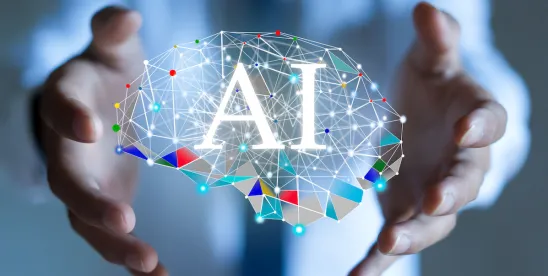WHAT YOU NEED TO KNOW IN A MINUTE OR LESS
Generative AI or “GenAI” is already transforming how we handle discovery in numerous ways, including:
- Providing faster access to meaningful information and key documents to help quickly understand and develop critical case strategies;
- Summarizing and synthesizing large volumes of data to isolate key documents and narratives without the need for review of every document; and
- Generating substantive outputs like privilege logs and deposition digests in shorter amounts of time, allowing increased focus elsewhere.
As a tool designed to connect the dots in data, recognize patterns, and even reason like humans, GenAI “thinks” like you do. If you know how to ask questions, give instructions, and provide feedback, you already know how to use GenAI. In a minute or less, here is what you need to know about working with GenAI in discovery.
Cutting Through the Noise
As data volumes and sources continue to increase, tools that can help sift through data quickly and accurately—finding key documents that support the offensive and defensive narratives of the case—are invaluable. Whereas e-Discovery practitioners have been using AI for decades for just this purpose, the advent of GenAI allows a more interactive and iterative experience with data.
For example, GenAI tools embedded in document review databases can query an entire database to find very specific documents or document sets. Questions like “Are there any documents that indicate that Company A misrepresented its financial performance to investors?” or “Were there internal meetings or conversations at Company A around 1 June 2021 regarding the company’s financials?” can immediately identify key documents and data patterns without needing to rely on search terms. GenAI is designed to eliminate the so-called fishing expeditions we often go on in discovery in order to find those critical pieces of evidence that can make or break a case.
Rapid Data Synthesis and Outputs
Similarly, a staple of GenAI tools is the ability to summarize large amounts of data—oftentimes in minutes. Whereas we used to have to rely on humans to read and review every document on a particular topic and manually create summaries, GenAI can now do it to requested outputs.
Whether requesting a high-level summary of customer service calls for a product at issue in a matter, a detailed summary of a witness’s disciplinary record and HR file within a company, or a bulleted list of a deponent’s inconsistencies during testimony, GenAI will listen to your prompting and instructions and provide the foundation necessary to build your case.
With proper guidance and input from humans, GenAI tools can generate content such as privilege logs and deposition or witness interview outlines in a fraction of the time that it would take to do it manually. For example, GenAI can use parameters for privilege descriptions and claims, apply those to the designated corpus of data, and create a log or analyze designated key data about a witness.
Practical Tips for Working With GenAI
Learn the Lingo
As with all new technology, it is important to learn key terms and concepts to ensure proper understanding and facilitate effective communication, both with the tool and with your colleagues and clients.
- Large Language Models: Models trained on vast amounts of data to create the foundation of a generative AI tool.
- Prompt engineering: The (typically iterative) process of designing inputs for AI tools to create the desired output.
- Hallucinations: Outputs generated by an AI tool that are inaccurate or misleading but presented as correct.
- Machine Learning: A form of AI in which computers and tools learn from data, identify patterns, and make decisions without being explicitly programmed to do so and with minimal human intervention.
Give it a Try
While it may be daunting, the only way to learn about GenAI is to try it out. The tools are designed to interact with users as if they are also human. You can talk to these tools like humans (even “please” and “thank you”), ask direct questions like they are humans, and provide instructions as you would a colleague. GenAI tools can tell you what else you might want to ask it or what else you might need to know that you haven’t thought of yet.
Practice
There are many GenAI tools available that are great options for honing your skills and confidence. With no need for formal training (although this is available as well), simply start asking questions or giving instructions and assess your results.
Be Bossy and Demand Satisfaction
The tool won’t mind if you’re a little demanding. A key to successful reliance on GenAI is clarity in your prompt and iteration to a satisfactory result. If you are not satisfied with the initial (or the second, third, or tenth) results, say so and ask the tool to try again based on revised instruction.
Know Its Limitations
GenAI is designed to work with human interaction and oversight. It should never replace human judgment or eliminate ethical responsibilities and considerations. Trust but verify!




 />i
/>i

